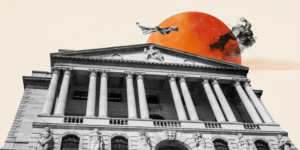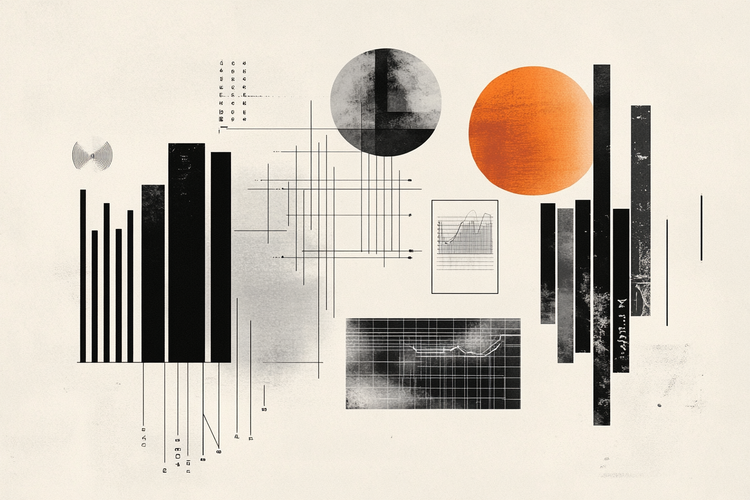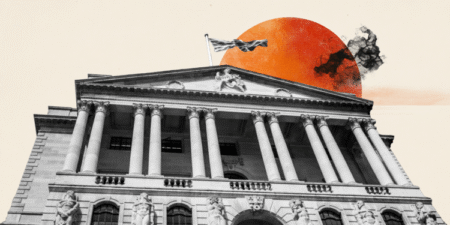When it comes to preparing for retirement, one word often comes up: diversification. Whether you’re starting to build your Individual Retirement Account (IRA) or looking to adjust your portfolio as retirement approaches, spreading your investments across several asset classes is essential to reducing risk and optimizing returns over the long term.
In an uncertain economic environment, marked by market volatility, inflation and changing monetary policies, diversification is no longer just a recommendation, it’s a necessity.
Here’s how to approach it intelligently, and why it’s crucial to securing your future.
Why diversification is essential in an IRA
An IRA, whether Traditional or Roth, is a tax-efficient tool for growing your savings for retirement. But the real strength of an IRA lies in the freedom of choice it offers. Unlike company retirement savings plans like 401(k)s, you have more control over your asset allocation.
Diversifying within an IRA allows you to:
- Reduce your exposure to a single market risk.
- Seize growth opportunities in multiple sectors.
- Protect against inflation and market downturns.
- Improve the long-term stability of your portfolio.
The three pillars of a diversified IRA: Equities, Bonds and Gold
Among the possibilities for diversification within an IRA, three asset classes stand out.
1. Equities: Engine of growth
Over the long term, the stock market remains one of the best levers for capital growth. But it also represents one of the most volatile and risky components of a portfolio.
In an IRA, equities allow you to target capital appreciation or dividend yields, notably through funds such as mutual funds and Exchange Traded Funds (ETFs).
The proportion of equities in your IRA should reflect your age and risk tolerance. A popular rule of thumb is to subtract your age from 100 to estimate the percentage of equities. A 35-year-old investor might aim for 75% equities, compared with 40% at age 60.
This is just an example, but as a general rule, it’s advisable to reduce your exposure to stock market volatility and risk as you approach retirement.
2. Bonds: Stability
Bonds bring a dose of predictability to your portfolio. They offer regular income and mitigate the volatility of equities.
Options include US Government Bonds (for safety), investment-grade corporate Bonds (for moderate yield) and high-yield Bonds (riskier but higher-yielding).
The famous 60/40 portfolio (60% Equities / 40% Bonds) is a classic strategy, often adjusted according to age or retirement income needs.
3. Gold: An insurance policy
In times of uncertainty or inflation, Gold acts as a safe haven. Investing in Gold, notably via an ETF or Gold IRA, can help reduce portfolio volatility, offer protection in times of economic crisis and preserve your purchasing power over the long term.
Historically, Gold has held up well during major crises (2008, 2020). It is therefore an effective complement to equities and bonds in prudent retirement planning.
Source: Faster Capital
Advanced IRA diversification
An IRA portfolio is not limited to US stock markets, Bonds and Gold. For those wishing to increase the resilience and growth potential of their retirement savings, it may make sense to explore complementary diversification paths, sometimes less traditional but increasingly accessible.
Real estate funds: Generating passive income
Real Estate Investment Trusts (REITs) enable investors to invest in real estate without directly purchasing physical assets. They bring together portfolios of residential, commercial, logistics and medical buildings, generating rental income that is redistributed in the form of dividends.
Integrating REITs into an IRA means introducing a potentially stable source of income with little correlation to fluctuations in traditional equity markets.
REITs are particularly attractive for investors approaching retirement, as they enable them to secure regular income while benefiting from the IRA’s tax advantages.
International and emerging equity funds: Reduce home bias
Many American investors focus their portfolios on local equities. Yet diversifying geographically allows them to benefit from growth in other parts of the world and reduce dependence on the US economy.
International index funds or ETFs with exposure to Europe, Asia or emerging stock markets provide global exposure to sectors or economic dynamics that evolve differently from the United States.
Over the long term, a well-thought-out international allocation can improve the risk-adjusted performance of an IRA portfolio, thanks in particular to the decorrelation between geographic zones.
Other commodities: Protecting against inflation
In addition to Gold, commodities can be used to further diversify an IRA. They are easily accessible via ETFs specializing in energy (Oil, Gas), industrial metals (Silver, Copper, Aluminum), or agricultural products (Wheat, Soybeans, Coffee).
These assets react to economic cycles that differ from those of stock markets or Bonds, and can therefore reinforce the portfolio’s overall diversification and robustness.
Alternative assets in a Self-Directed IRA: Opening up the field of possibilities
For sophisticated investors, a Self-Directed IRA (SDIRA) offers far greater flexibility than traditional IRAs. It makes it possible to include alternative assets that might otherwise be inaccessible:
- Real estate (residential or commercial)
- Cryptocurrencies such as Bitcoin or Ethereum
- Private equity (unlisted companies, startups)
- Physical commodities (Gold, Silver, Palladium)
These asset classes can offer high potential returns, but they come with specific constraints: lack of liquidity, custody fees, regulatory complexity and the need for a good understanding of the market.
It’s crucial to be well informed, and ideally accompanied by a professional, before including these assets in your IRA.
In short, advanced diversification allows you to build a portfolio that is more complete, more balanced and more resilient to economic contingencies. It’s not for everyone, but used wisely, it can considerably boost your chances of long-term success. As always, tailor your choices to your risk profile, time horizon and retirement planning.
IRA diversification, the key to a worry-free retirement
By diversifying your Individual Retirement Account (IRA) between Stocks, Bonds and commodities like Gold, among other potential investments, you increase your chances of weathering financial storms without compromising your future standard of living.
And if Social Security represents a safety net, a well-diversified IRA strategy can give you more freedom to choose your retirement lifestyle.
IRAs FAQs
An IRA (Individual Retirement Account) allows you to make tax-deferred investments to save money and provide financial security when you retire. There are different types of IRAs, the most common being a traditional one – in which contributions may be tax-deductible – and a Roth IRA, a personal savings plan where contributions are not tax deductible but earnings and withdrawals may be tax-free. When you add money to your IRA, this can be invested in a wide range of financial products, usually a portfolio based on bonds, stocks and mutual funds.
Yes. For conventional IRAs, one can get exposure to Gold by investing in Gold-focused securities, such as ETFs. In the case of a self-directed IRA (SDIRA), which offers the possibility of investing in alternative assets, Gold and precious metals are available. In such cases, the investment is based on holding physical Gold (or any other precious metals like Silver, Platinum or Palladium). When investing in a Gold IRA, you don’t keep the physical metal, but a custodian entity does.
They are different products, both designed to help individuals save for retirement. The 401(k) is sponsored by employers and is built by deducting contributions directly from the paycheck, which are usually matched by the employer. Decisions on investment are very limited. An IRA, meanwhile, is a plan that an individual opens with a financial institution and offers more investment options. Both systems are quite similar in terms of taxation as contributions are either made pre-tax or are tax-deductible. You don’t have to choose one or the other: even if you have a 401(k) plan, you may be able to put extra money aside in an IRA
The US Internal Revenue Service (IRS) doesn’t specifically give any requirements regarding minimum contributions to start and deposit in an IRA (it does, however, for conversions and withdrawals). Still, some brokers may require a minimum amount depending on the funds you would like to invest in. On the other hand, the IRS establishes a maximum amount that an individual can contribute to their IRA each year.
Investment volatility is an inherent risk to any portfolio, including an IRA. The more traditional IRAs – based on a portfolio made of stocks, bonds, or mutual funds – is subject to market fluctuations and can lead to potential losses over time. Having said that, IRAs are long-term investments (even over decades), and markets tend to rise beyond short-term corrections. Still, every investor should consider their risk tolerance and choose a portfolio that suits it. Stocks tend to be more volatile than bonds, and assets available in certain self-directed IRAs, such as precious metals or cryptocurrencies, can face extremely high volatility. Diversifying your IRA investments across asset classes, sectors and geographic regions is one way to protect it against market fluctuations that could threaten its health.
Read the full article here
















